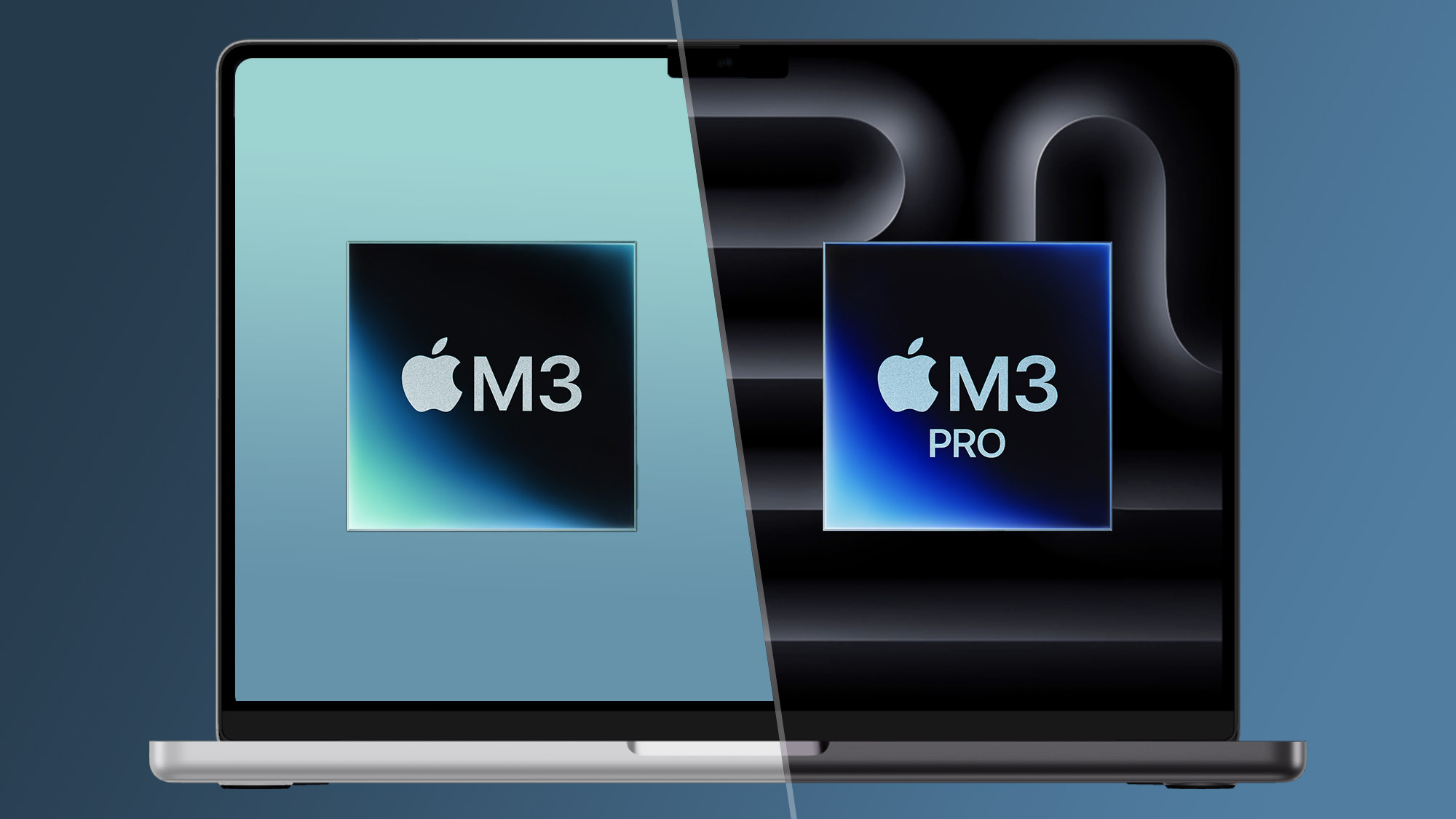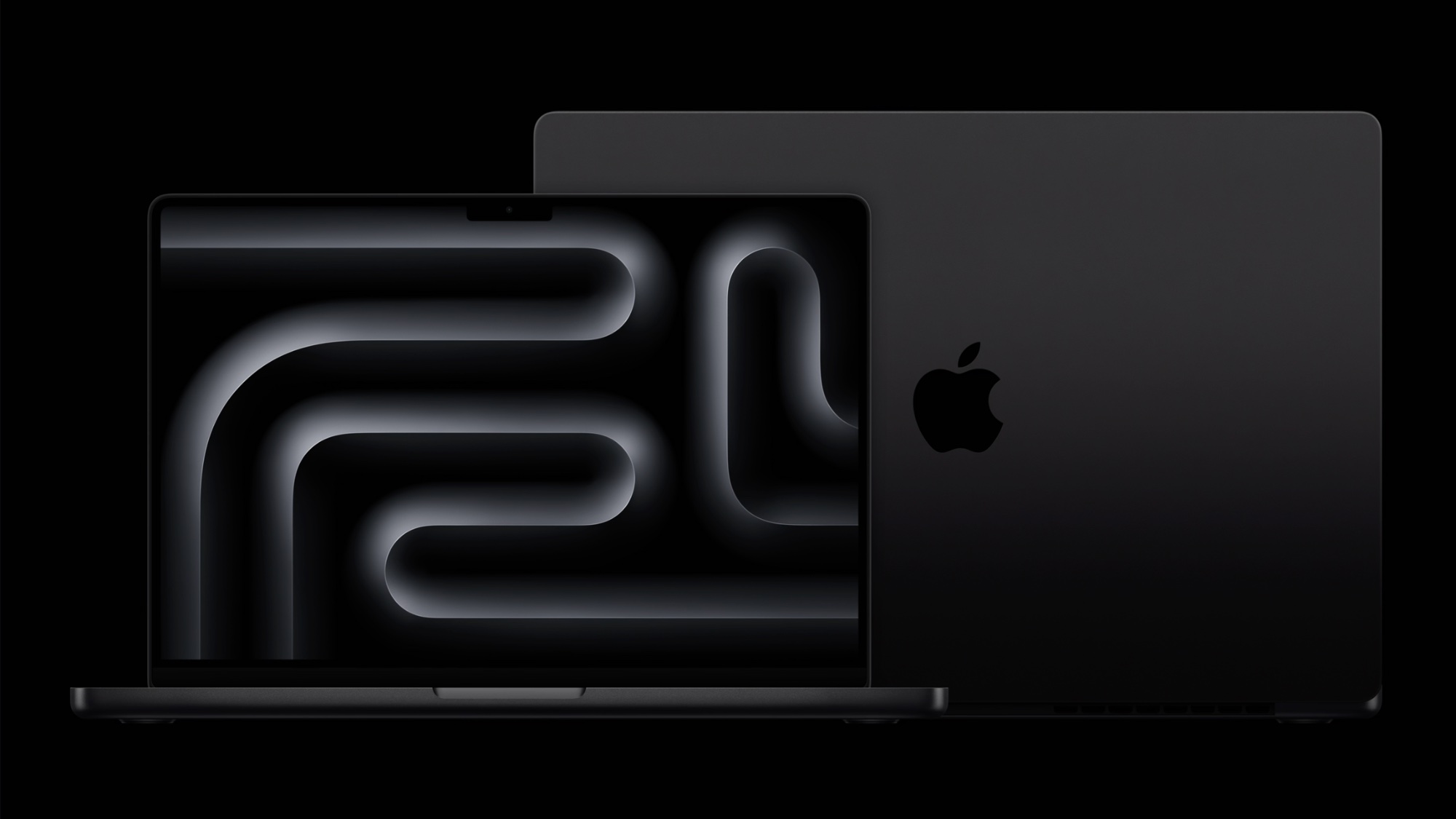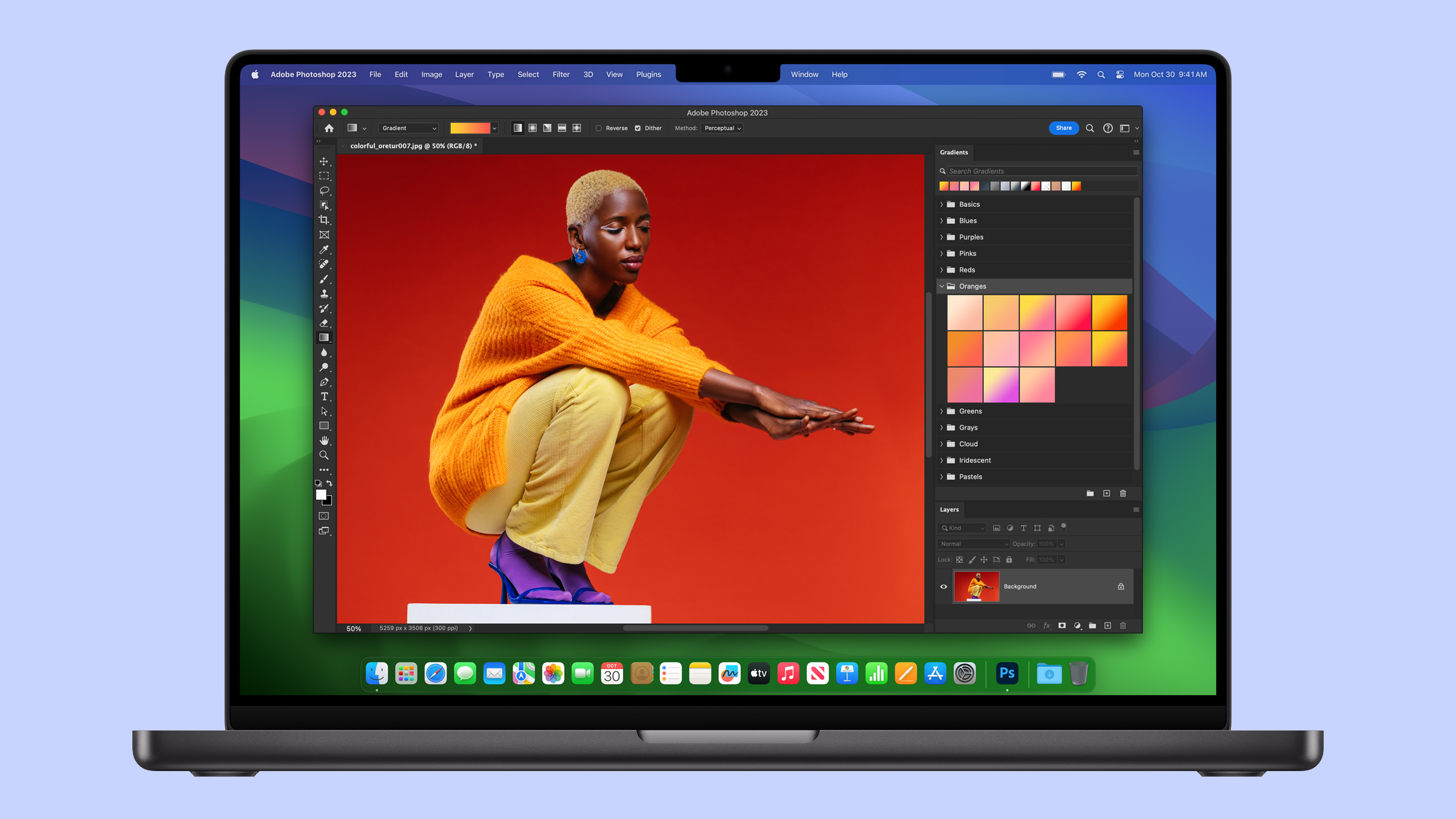
When Apple introduced us to the redesigned 14-inch and 16-inch MacBook Pros in 2021 it also introduced a new power scheme that saw these Pro-grade laptops outfitted with beefier versions of basic Apple silicon. So instead of the M1 chip, those 2021 Pros could be bought with your choice of an Apple M1 Pro or M1 Max chip.
That strategy held true for a year or two, but now things are changing again with these new MacBook Pro M3s. They still come in 14-inch and 16-inch varieties, but now you can get the 14-inch MacBook Pro with your choice of three different chips: The basic Apple M3 chip, the M3 Pro or the M3 Max.
That makes the process of knowing how to buy an M3 MacBook Pro trickier because you have more options to choose from. So to help, I've studied the specs for these laptops and constructed a blow-by-blow breakdown between the MacBook Pro M3 vs MacBook Pro M3 Pro to help you decide which new MacBook is right for your needs and budget.
MacBook Pro M3 vs MacBook Pro M3 Pro: Specs
MacBook Pro M3 vs MacBook Pro M3 Pro: Price and availability
The 14-inch MacBook Pro M3 is available to order now from Apple's website, and the laptops become available November 7. To get an entry-level model with the M3 chip, 8GB of unified memory and 256GB of storage will cost you $1,599 to start, though you can of course pay more to upgrade the internals.
As you might expect, you'll pay more for a 14-inch MacBook Pro M3 Pro — at least $1,999 to start, though the ceiling of what you can pay for an M3 Pro MacBook Pro is much higher than how much you can pay for a basic M3 MacBook Pro. That's because the entry-level 14-inch MacBook Pro with M3 is limited in how much RAM or storage you can outfit it with, while the more expensive mode with an M3 Pro chip onboard can accommodate more.

So really you get what you pay for here. The entry-level 14-inch MacBook Pro M3 should be plenty powerful enough for basic work and day-to-day tasks, effectively replacing the 13-inch MacBook Pro that's been discontinued.
But if you want more power, or more than 24GB of RAM or 2TB of storage, or access to the new Space Black color scheme, you'll want to pay at least the $400 more to upgrade to at the 14-inch MacBook Pro M3 Pro. This model can accommodate up to 36GB of RAM and 4TB of storage if you pay more to upgrade to the maxed-out M3 Pro version, or up to 128GB of RAM and 8TB of storage if you go all the way to the fully-maxed out M3 Max model.
Of course, that would cost you upwards of $7k ($6,899) so you may want to stick to a cheaper model of M3 MacBook Pro unless you really need all memory.
MacBook Pro M3 vs MacBook Pro M3 Pro: Design and displays
There's a few big design differences to consider when choosing between the 14-inch MacBook Pro M3 vs MacBook Pro M3 Pro. For one, only the M3 Pro MacBook Pro offers the Space Black color; the regular MacBook Pro M3 is limited to Space Silver and Space Gray. The Space Black design uses a special anodized aluminum that minimizes fingerprints, which is welcome.
All versions of this laptop come with the same slick 14.2-inch Liquid Retina XDR display (3024 x 1964 pixels), and they all have that little black notch hanging down from the center bezel where the cameras sit.
But the cheapest model of 14-inch MacBook Pro M3 comes with just two Thunderbolt 4 ports. If you'd prefer to have three, you have to pay at least $500 more for the pricier MacBook Pro M3 Pro.

That's because while all models of this laptop have an HDMI out, an SDXC card reader, a 3.5mm headphone jack and a MagSafe 3 port for charging, the basic model sports just a pair of Thunderbolt 4/USB-C ports (one on either side). All models with an M3 Pro or M3 Max chip inside offer three Thunderbolt 4 ports, which could be a game-changer if you plan to use a lot of external devices or displays.
And speaking of external displays, there's a key difference in how many you can support when buying an M3 MacBook Pro vs one with a beefier M3 Pro chip.
Specifically, the 14-inch MacBook Pro M3 can support up to one external display at up to 6K resolution and 60Hz via Thunderbolt or up to 4K/120Hz over HDMI. If you want to use more, you'll have to upgrade the chip inside the MacBook.
That's because a 14-inch MacBook Pro with M3 Pro can support up to two external displays at 6K/60Hz via Thunderbolt, or one at 6K/60Hz via Thunderbolt and one at 4K/144Hz via HDMI. Or you could run one external display at 8K/60Hz, and another via HDMI at 4K/240Hz. The 14-inch MacBook Pros with M3 Max chips can support even more external displays, to the tune of three or more.
So while the display quality is identical on these laptops, the number of Thunderbolt ports they offer and their capability to support external displays increases as you spend more money on the chips inside.
MacBook Pro M3 vs MacBook Pro M3 Pro: Performance
We haven't yet had a chance to test the 14-inch MacBook Pro M3 or its more powerful variants, so we can't yet tell you for sure how much better performance you can expect from the M3 Pro version versus its entry-level M3 sibling.
But we have briefly gone hands-on with the MacBook Pro M3, and I can report that even the basic version of these laptops feels snappy and responsive. Apple also showed off how well these M3-powered Pros can play modern graphically-demanding games like Baldur's Gate 3 and Lies of P, so there's good reason to think upgrading to a MacBook Pro with a beefy M3 Pro or M3 Max chip and lots of RAM will allow you to play even modern (Mac-compatible) games well.

In terms of raw chip power, let me briefly talk you through how the M3 Pro chip differs from the basic M3. The entry-level M3 chip features 25 billion transistors, while the more powerful and expensive M3 Pro has 37 billion.
The entry-level M3 chip sports an 8-core CPU and a 10-core GPU, while the M3 Pro can be configured with up to a 12-core CPU and an 18-core GPU. And since the entry-level M3 can only support up to 24GB of unified memory while the M3 Pro can be configured to support up to 36, the more expensive version can deliver better performance when gaming, multitasking and more.
And speaking of gaming, there are a few new features debuting on the M3 family of chips. These include support for hardware-accelerated ray tracing and mesh shading, which are advanced graphical technologies used in many modern games. Also, a new Dynamic Caching feature dynamically allocates local memory in hardware to tasks in real time in a new way that Apple claims is an "industry first" method of efficiently allocating the exact amount of memory needed for specific tasks.
All these new features are available on the M3, M3 Pro and M3 Max chips, so you can take advantage of them no matter which MacBook Pro M3 you buy.
MacBook Pro M3 vs MacBook Pro M3 Pro: Cameras
Both of these laptops sport 1080p FaceTime cameras, so they should be equally capable of making you look good on video calls.

Part of that work is done by the Neural Engine on the M3 chips, which handles tasks like auto-blurring your background and keeping you centered in the frame during video calls. And while Apple claims the Neural Engine in the new M3 chips is up to 60% faster than in the M1 series, there shouldn't be any noticeable differences between video call performance on the M3 vs M3 Pro MacBooks.
MacBook Pro M3 vs MacBook Pro M3 Pro: Battery life
Since we haven't yet had a chance to test and review the MacBook Pro M3 we can't say for sure how long these laptops actually last in our battery test, or how their battery life differs between the M3 and M3 Pro models.
However, we can cite what Apple claims, and the company has a better track record than most when it comes to battery life claims which hold up to our real-world testing.
According to Apple, an entry-level MacBook Pro M3 should last up to 15 hours when browsing the web, whereas one with an M3 Pro or M3 Max chip should last up to 12 hours. That's believable as it's right in line with the M2 generation — the M2 Pro MacBook Pro 14-inch lasted just over 14 hours in our battery test, for example.
MacBook Pro M3 vs MacBook Pro M3 Pro: Outlook
Deciding between whether to buy the MacBook Pro M3 vs MacBook Pro M3 Pro is hard because there isn't a massive amount of difference between the two unless you really care about performance, RAM and storage capacity.
Until we get a chance to benchmark these MacBooks we can't say for sure how big of a power difference exists between the entry-level MacBook Pro M3 and the maxed-out M3 Pro version. Still, it's safe to say if you care about speedy performance during demanding tasks like coding, photo/video editing or gaming you'll probably want to spend as much as you can afford on the more expensive MacBook Pro M3 Pro. You'll likely also appreciate the extra USB-C port you get on the M3 Pro model, as well as the extra support for displays with high resolutions and refresh rates.
But if you just want a speedy 14-inch MacBook for work or school there's no clear reason why you shouldn't be just fine with the entry-level MacBook Pro M3, which is the cheapest 14-inch MacBook Pro in years. Apple silicon makes even entry-level MacBooks amazing productivity machines, and the new graphics features of the M3 chip make even the entry-level MacBook Pro M3 sound like a pretty impressive all-rounder that could be a serious contender for one of the best laptops of the year.







